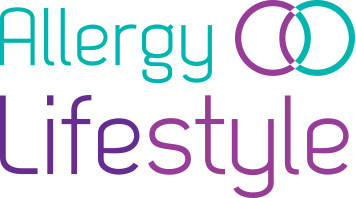Allergy Blog
What is Anaphylaxis?
Anaphylaxis is a severe allergic reaction which requires immediate emergency medical care. An allergic reaction occurs when your immune system regards something harmless (such as a peanut, egg or shellfish) as a threat. Some people are so sensitive that even very small quantities of their allergen can cause an anaphylactic reaction. Your body releases chemicals including histamine from cells in the blood and tissues where they are normally stored. This causes the symptoms of anaphylactic shock to occur such as swelling of the mouth, throat, or eyes. The person can also feel wheezy or might be coughing a lot. These symptoms will usually present within seconds or even minutes of being in contact with an allergen however, in rare circumstances it may take several hours. The release of chemicals such as histamine in anaphylaxis is triggered by the interaction between an antibody called Immunoglobulin E (IgE) and the allergen causing the anaphylactic reaction.
How an Anaphylactic shock is caused?
Even though anaphylaxis is most commonly caused by food substances it can occur by the sufferer being in contact with anything they are allergic to. The most common food causes are peanut, tree nuts, sesame, fish, eggs, dairy, and soya. The most common non-food causes are bee/wasp sting, penicillin, and latex however, there are many more. In some people, exercise can trigger anaphylaxis – either on its own or in combination with other factors such as food or drugs (e.g. aspirin).
Symptoms of Anaphylaxis?
If someone is suffering from any of these symptoms they may be having an anaphylactic shock:
- Swelling in the face, throat and/or mouth
- Widespread flushing of the skin
- Difficulty breathing
- Severe asthma
- Difficulty in swallowing or speaking
- Abdominal pain, nausea and vomiting
- Nettle rash (also known as hives) anywhere on the body
The reaction must be treated immediately if there is a serious fall in blood pressure, the patient becomes weak and floppy and may have a sense of something terrible happening. This may lead to collapse, unconsciousness and – on rare occasions – death.
Treating anaphylaxis?
People at risk of suffering anaphylaxis are prescribed pre-loaded injector devices containing adrenaline such as EpiPen, AnaPen, Jext or Emerade. Because severe allergic reactions can occur rapidly, they should carry their adrenaline pen at all times and have it administered by the allergic person, carer or family member as soon as a severe reaction is suspected. An ambulance must also be called immediately should you use an adrenaline injection pen. Best practice is to inject this into the thigh region or the body so as to avoid any veins or arteries. Once you do this you should see the symptoms begin to ease off quite quickly, as the adrenaline acts to relax the lungs, improve breathing, stimulate the heartbeat and help to stop swelling around your face and lips. If the symptoms don’t ease within 5 minutes then you need to use another injection. It is also of course of the upmost importance to call an ambulance once you’ve administered the adrenaline and get professional medical attention.
Protecting yourself from Anaphylaxis?
The best way to protect yourself from having an allergic reaction is obviously by avoiding your allergens should you know what they are. If you’re allergic to a certain type of food check labels in the supermarket before purchasing, read food labels every time you shop – even if you have bought a product before as ingredients can change. By law, pre-packed food products must declare the presence of 14 named allergens in the ingredients list. Allergen information must also be provided for unpackaged or loose foods and in restaurants and food outlets so check before you eat. Read the menu carefully in restaurants and highlight your allergies to the staff and chef.
It is required by law in all EU member states to provide allergy information in food on
- Peanuts
- Tree nuts
- Milk
- Egg
- Cereals containing gluten
- Soya
- Sesame seeds
- Fish
- Shellfish
- Molluscs
- Celery
- Mustard
- Lupin
- Sulphites above a level of 10 parts per million
To protect yourself you should always carry 2 adrenaline auto-injectors with you everywhere. You should also make sure everyone around you knows how to use your adrenaline pen as you may be unable to. You can get trainer pens by clicking here, they are great for practising with and can help you or someone else be prepared in the event of an emergency. If you have a child with anaphylaxis you can find more information about sending them back to school by clicking here.
Disclaimer: The information provided is for informational purposes only and is not intended to be a substitute for professional medical advice, diagnosis or treatment. Allergy Lifestyle Limited (t/a) Allergy Lifestyle) uses reasonable endeavours to check the accuracy of information provided however no warranty is given that they are error-free.








